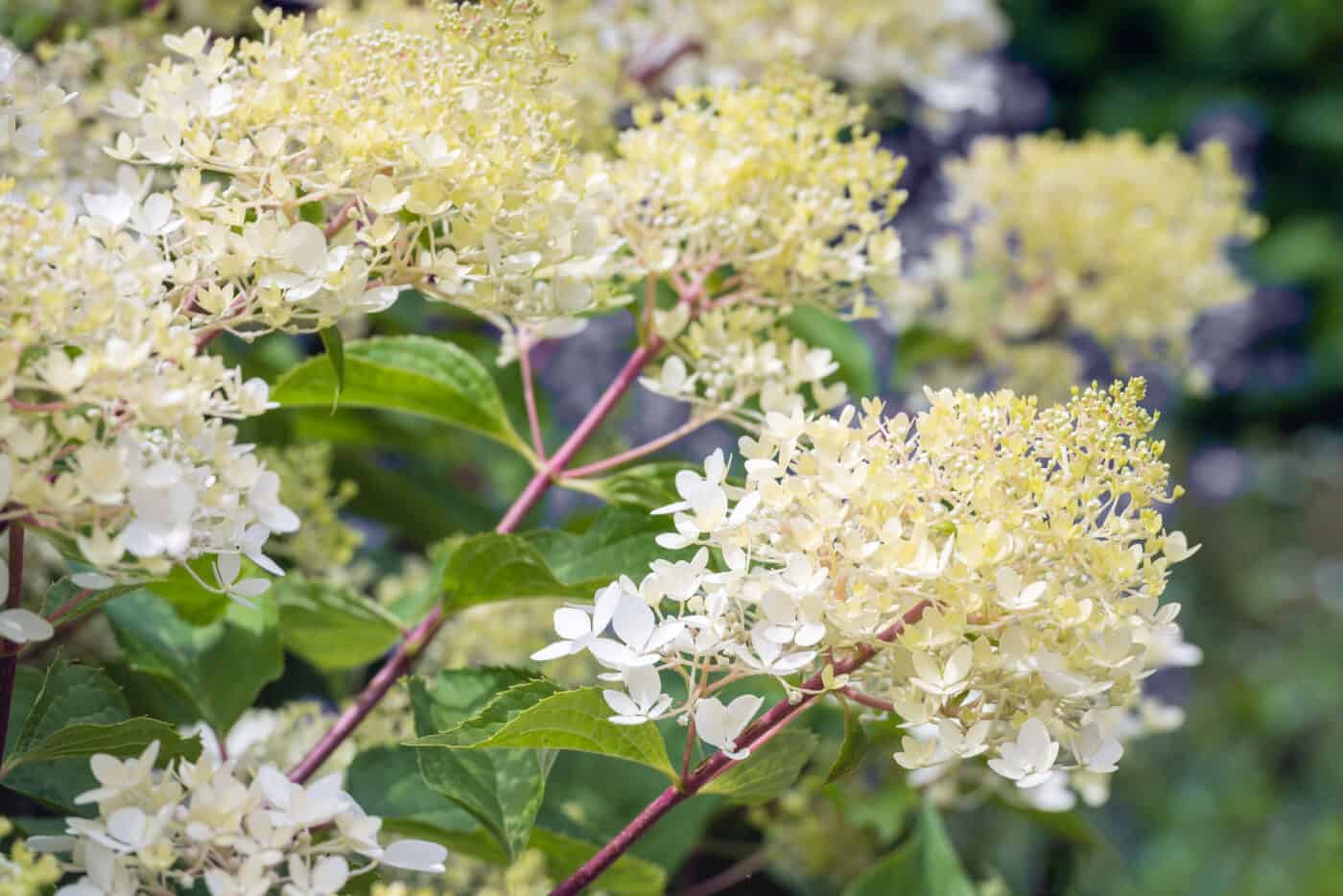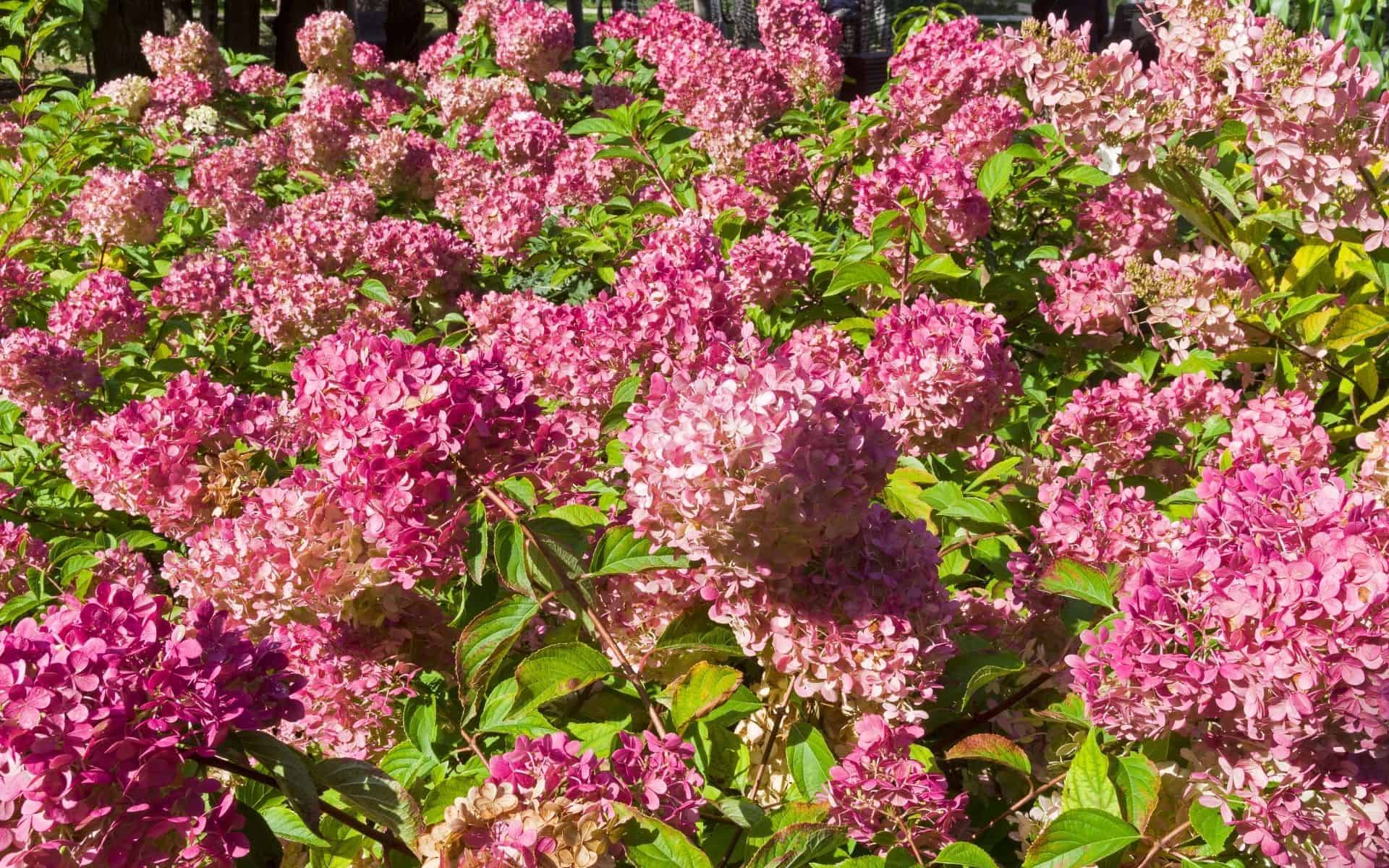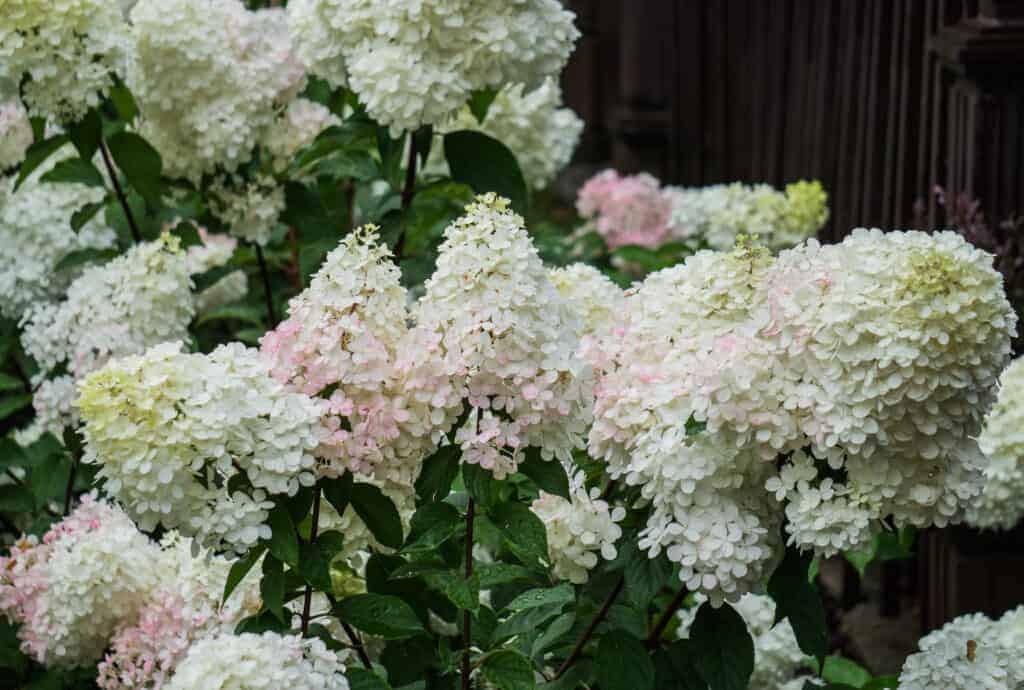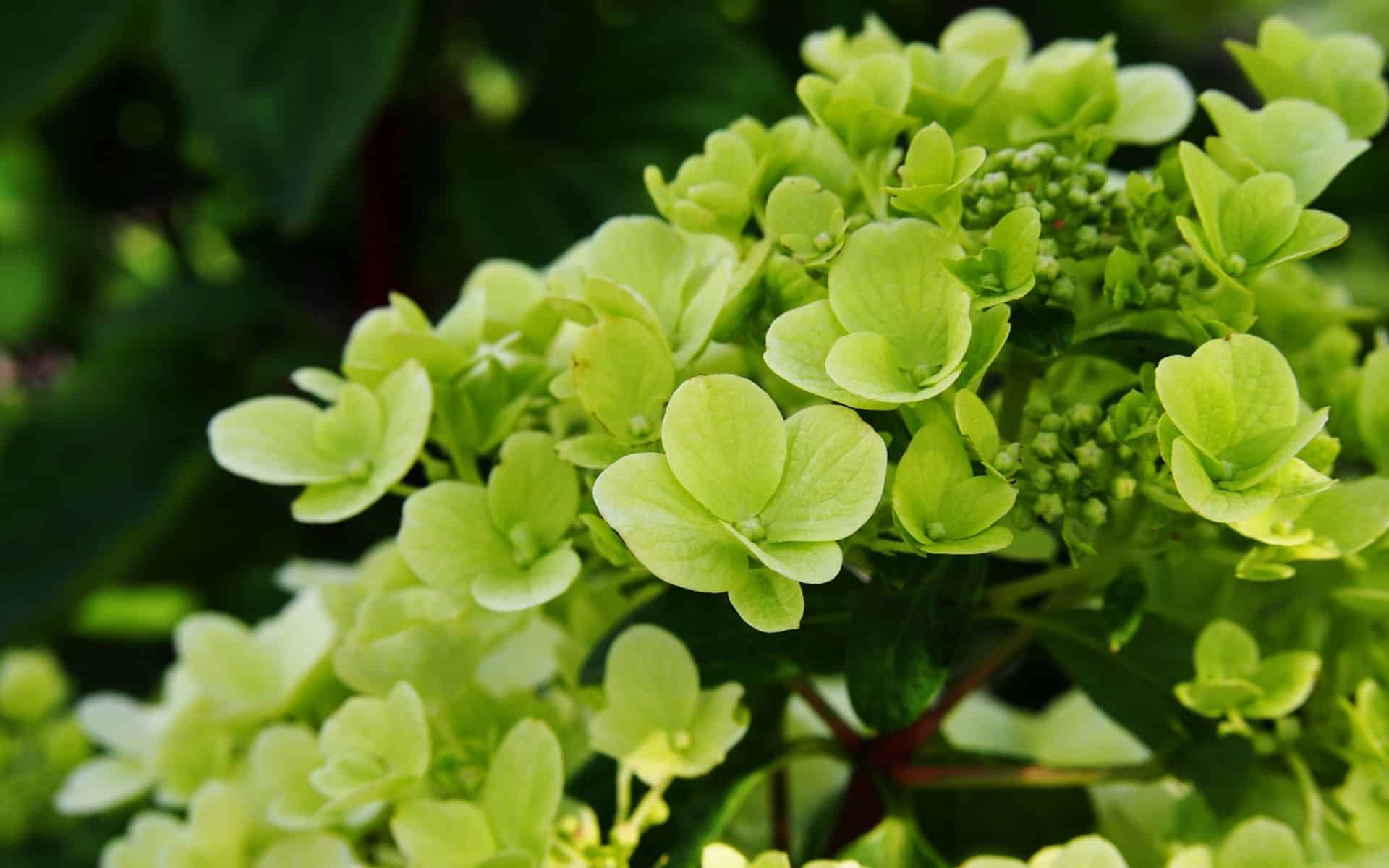Panicle hydrangeas are woody flowering shrubs that bloom with pale green, white, and sometimes pink flowers each summer. They range in height from dwarf types to large shrubs up to 15 feet tall. Panicle hydrangeas are winter hardy in all but the coldest growing zones and are one of the more durable hydrangea types.

Panicle hydrangea basics
Panicle hydrangeas are native to Japan and China. The panicle hydrangea’s scientific name is Hydrangea paniculata. These shrub hydrangeas bloom once a year during the late spring or early summer.
Panicle hydrangeas typically grow to be 6-8 feet tall but can grow to be 15 feet tall and 12 feet wide in exceptional circumstances. These hydrangea plants grow very quickly and can grow up to 25 inches a year, which is quite fast for a flowering shrub.
The panicle hydrangea was introduced to the western hemisphere by Philipp Franz von Seibold in 1861 but was written about by Seibold as early as 1829.
Panicle hydrangea flowers
The flowers of the panicle hydrangea are very interesting because they change color with time. When this plant first blooms in the late spring or early summer, the flowers are very light green in color. Then, as the blooms age and grow larger, they turn white. This causes the petals to look two-toned and is why when you look at the petals of the panicle hydrangea flower, the edges are light green and the rest of the petal is white.
However, the petals do not stay white and green throughout the summer while the panicle hydrangea is in bloom. Instead, as the summer heat cools down and becomes slightly colder, the petals become light pink. This is why sometimes, when you look at a panicle hydrangea’s petals during the late summer or early fall when it is slightly cooler than normal, the petals look pink and white, with a very small amount of green at times.
Panicle hydrangeas bloom once per year, and the blooms last from late spring or early summer until late fall or early winter, which is unusual for flowers as many flowers only bloom for a few weeks rather than a few months. When panicle hydrangeas stop blooming, their petals slowly fall to the ground.
Panicle hydrangea varieties
Here are some popular varieties of Panicle Hydrangea shrubs to grow:
- Limelight® Hydrangea
- Little Lime® Hydrangea
- Vanilla Strawberry® Hydrangea
- Quick Fire® Hydrangea
- Little Quick Fire® Dwarf Hydrangea
Some popular panicle hydrangea varieties are also offered in tree form. These “hydrangea trees” are panicle hydrangea shrubs that are cultivated into standard form with a single upright stem/trunk in the center.

Where to plant panicle hydrangeas in the garden
Choose a planting location where the shrub’s leaves will receive full sun (at least 6-8 hours per day). If you live in a very hot and sunny area that frequently reaches temperatures over 80 degrees Fahrenheit, plant your hydrangea in a somewhat shady spot. If you live in an area that does not typically reach temperatures over 80 degrees Fahrenheit, plant it in a very sunny area so it can get plenty of sunlight.
When you pick a spot to put your panicle hydrangea, make sure it has plenty of room to grow. Panicle hydrangeas are one of the few hydrangea types that can stand being in the sun all day, even when it is hot, so if you need to plant it in a sunny area and where you live regularly reach temperatures that are over 80 degrees Fahrenheit, it should still grow and thrive. Just make sure to give your panicle hydrangea plenty of water.
How to plant panicle hydrangeas in the garden
After you pick a spot to plant your panicle hydrangea, start planting it by digging a wide but shallow hole. If you notice thick white circling roots on the root ball, gently loosen them so the roots can freely grow outwards.
After you dig the hole, gently place your new panicle hydrangea inside. Cover the roots with well-draining soil and lightly water it.
The best time to plant a hydrangea is during the late fall or early spring. Fall planting is typically easiest, but available varieties are sometimes better in early spring.
Care after planting new panicle hydrangeas
After you plant your panicle hydrangea, make sure to water it frequently. Do not water it if there is any standing water where it is planted, as it will not grow. The best time to add water is when the soil around it is slightly dry to the touch.
If your panicle hydrangea is blooming and the flower petals’ colors look muddy, then you need to add more water and consider watering it more frequently. After you do this for a few weeks, the colors on the petals of your panicle hydrangea should become bright and vibrant once again, and you will be able to enjoy the beauty of these flowers to the fullest.

How to care for panicle hydrangea plants
It is relatively easy to take care of panicle hydrangeas. Simply ensure it has enough water and sunlight, and it will grow very tall.
If you want to promote growth in your panicle hydrangea, prune it once a year. However, do not prune back the branches very much, as it may cause your plant not to grow as much as you expect it to. Only cut back 1/3 of the older branches every year. Do all of your pruning at the end of winter, as the weather becomes warm before the growing season begins, or at the very beginning of spring, right before the blooms begin to grow.
If you prune your panicle hydrangea when the blooms are beginning to grow, you may cut them off by accident, and then it will not bloom that year, which would be very unfortunate.
Make sure to weed your garden regularly as well, as too many weeds in the same area as a growing hydrangea will stunt its growth.
Panicle hydrangeas will usually survive during the winter even if you do not prepare the roots in any way, but it always helps if you prepare them a little bit. If where you live gets severely cold during the wintertime, add 1 to 2 inches of mulch on top of or around your plant. This will help protect the roots from the bitter cold.

Common pests of hydrangeas
Aphids and various mites are very common pests that negatively affect panicle hydrangeas. If you notice that there is pest damage on your prized plant, spray a gentle natural pesticide on the leaves and wait until your plant has recovered. Be sure to follow the application instructions and frequency guidelines for your chosen product.
Plant diseases that can affect these hydrangeas
If your panicle hydrangea seems to be damaged, but there do not seem to be any pests around to affect the plant, it may be suffering from leaf spot, rust, mildew, bud blight, or bacterial wilt. If any of these occur, ensure your plant receives plenty of sunlight. If you so choose, you can also add fertilizer to help strengthen the plant. However, you may have to remove some of the damaged roots or branches, depending on how much damage the panicle hydrangea has suffered.
One way to treat disease is to decrease watering and increase air circulation around the plant. Alternatively, transplant it to an area with better soil drainage or more air movement. Commercial organic fungicides also tend to be effective in treating fungal infections in panicle hydrangeas. Follow the application instructions and frequency guidelines listed on the product you choose.






